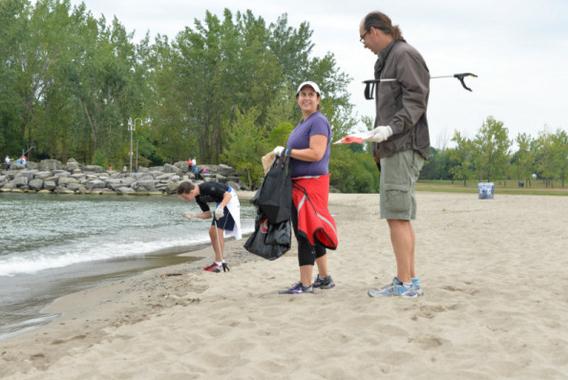Ever thought seriously about adopting a polar bear?
How about an elephant, rhinoceros, or river otter?
Tens of thousands of your neighbors in Canada have, and together they’ve donated millions of dollars to conservation efforts to do so. Even more interesting, these animal adoptions are most often given to wildlife lovers as Christmas gifts.
You can imagine then how disappointed an eager gift-giver or person looking forward to adopting an animal might be if their polar bear did not arrive in time to be enjoyed on Christmas morning.
Not delivering on a holiday adoption promise could be a reputation killer.
That’s the dire predicament World Wildlife Fund Canada, a nonprofit dedicated to conservation and protecting at-risk species, found itself three years ago.
Time to level with you now.
When we say adoption, we’re not really talking about taking in and caring for a caribou or Arctic fox. Instead, when WWF-Canada donors symbolically adopt an at-risk species they receive a special tote, a certificate of adoption noting their gift, a plush replica of the animal they’re adopting.

“It’s just one of the many ways we’re connecting people with nature,” says Chelsie Burke, WWF-Canada’s Community Campaigns Manager.
Symbolic adoptions, one of the organization’s biggest funding sources, have been extremely popular among wildlife lovers for years. But the 2013 adoption campaign was one of the WWF-Canada’s first cracks at a new ecommerce system and it was quickly careening off the rails.
The problem?
The organization’s order management system wasn’t talking with its fulfillment center properly. It meant adoption kits weren’t being packaged and shipped. Also, wildlife lovers with big hearts were in jeopardy of not receiving their kits in time for Christmas morning.
Besides potentially unhappy donors…
A high profile ecommerce meltdown could cause WWF-Canada, an organization extremely reliant on a committed donor base and living up to the international standard of its strong brand, to possibly shun ecommerce and the digital future it needed to embrace in order to win the hearts and minds of tomorrow’s wildlife loving donors.
Inspiring Change
Dipping your toe into the ecommerce water, especially for risk-averse nonprofit not used to leveraging digital tools for fundraising, can be a challenge internally.
That’s why so much was on the line with the holiday adoptions; skeptical eyes were watching as the spotlight shined on ecommerce during a crucial fundraising period for WWF-Canada.
“Holiday adoptions are a huge source of revenue and crucial,” Burke says regarding fundraising. “We need those adoption funds to do the important conservation and protection work we’re known for.”

That type of commitment to taking care of nature is what lured Tonny Shin, WWF-Canada’s digital properties manager, away from the startup world. “WWF-Canada is one of my favorites,” Shin says referring to nonprofits. “I wanted to shift gears and see if I could help a nonprofit I loved with technology.”
Despite being new to WWF-Canada during the holiday adoption hiccup, it was Shin’s job to prove ecommerce could work at a nonprofit. That meant getting people from different departments from across the organization to buy into a new way of connecting and fundraising.
“It was definitely a stressful time,” Shin admits. “It was rough but we really came together as a team.”
Here’s what he means…
The demand for adoption kits, spurred by a television marketing blitz, was massive. Instead of disappointing donors who were expecting to receive their adoption kits in time for Christmas, WWF-Canada’s in-house donor relations team stepped in to fill the void technology had left.
“Everyone rolled up their sleeves and got to work,” Shin says proudly of his coworkers.
The team put in long hours packaging the kits by hand and getting them out the door in time for Christmas.

“It was like a real life Santa’s workshop,” Burke says with a laugh. “We were all like little elves working frantically.”
The adoption kits were delivered in time for Christmas.
More importantly, the organization witnessed firsthand the overwhelming online demand for its products. Despite the technical issues Shin and his team would ultimately iron out, the ecommerce concept had been proven.
“It feels really good knowing I’m helping an organization as important as the WWF-Canada come into a new age,” Shin says. “Ecommerce can make a real impact.”
With the organization ready to embrace ecommerce…
WWF-Canada needed a platform on which it could rely to scale quickly to meet demand.
Winning Hearts & Minds
The signal was clear that donors desired an ecommerce channel.
WWF-Canada, in an effort to never again let strong demand overwhelm it, upgraded to Shopify, an enterprise ecommerce solution for high volume merchants. “Shopify has definitely made a big difference for us,” Shin says. “It’s user-friendly and really easy to figure out with just a little bit of a technical background.”
The flexibility Shopify offers has positioned WWF-Canada to improve its back end, and the way its order management system works with its fulfillment house, so high volume hiccups become relics of the past. “Shopify is really what we needed,” Shin says. “We appreciate having a platform we can rely on.”
Today, all of the WWF-Canada’s adoptions are ecommerce transactions powered by Shopify. In addition to the $1.5 million adoptions generated each year, Shopify’s customizable checkout also provides adoption purchasers an opportunity to make a separate contribution to help address the environmental challenges that matter most to them, including protecting wildlife.

“The ability to scale and automate certain processes is really exciting,” Burke says.
Because Shopify integrates easily with third-party applications and systems, WWF-Canada believes it’ll grow its ecommerce footprint after integrating Plus with its new marketing automation platform which will eventually allow the organization to better segment and target users.
“It’s really going to help us identify our biggest fans,” Shin says. “We’ll be able to make smarter data-driven decisions and be able to target the people most likely to be interested in what we’re offering.”
Establishing an ecommerce channel not only generates a new source of income, but also helps the WWF-Canada reach the next generation. “It’s really helping us get into the hearts and minds of children,” Burke says. “We need to be online for them because that’s where so much of the attention has been moving.”
Speaking of attention…
The reporting Shopify offers has gotten a lot of Burke’s, especially during holiday adoption campaigns. “I am addicted to the reporting,” Burke says with a laugh. “I’m constantly hitting the refresh button to see our hourly and daily sales and comparing them to last year.”
Connecting People with Nature
It’s simultaneously impressive and seemingly impossible.
But one of the WWF-Canada’s goals is to forge a deeper connection to the natural world for Canadians. This aim might mean inspiring people to clean up a shoreline, urge green practices in the workplace, or motivating school kids to protect the environment in creative ways.

“It’s a way to get people back to their roots,” Burke says. “So many of us now live in urban environments that going back to nature is a good reminder of the environment and species we all have a responsibility to protect.”
Burke and her team are already seeing success.
As of this writing, more than 380,000 Canadians have taken some sort of action, at the urging of the WWF-Canada, to help nature thrive.
Expect WWF-Canada to use the robust ecommerce channel it has developed to engage even more deeply with these people and others in the future. It’s a transition to digital in which Burke and Shin are proud to have played a role. “Once we started to see ecommerce success minds began to change,” Shin says of the organization. “Digital is the way constituents prefer to communicate today so it’s really fulfilling to be a part of the change.”
What about advice for other nonprofits or organizations set in their analog ways?
“Understand both worlds and step into the future slowly,” Shin advises. “Instead of just dropping ecommerce on skeptics or those who are unfamiliar with it, work to relieve their anxieties and make it clear that ecommerce is simply another tool people can use to achieve better results.”
WWF-Canada still has a thriving offline fundraising strategy. However, it’s one the team is now willing to adapt for the digital world, while simultaneously exploring new platform integrations such as Facebook Messenger which could one day help the organization improve on its already best-in-class customer service.
“We’re conservationists at heart,” Burke says. “Shopify is a tool we can use to fund the important work we do and help people adopt the animals they’re passionate about protecting.”




